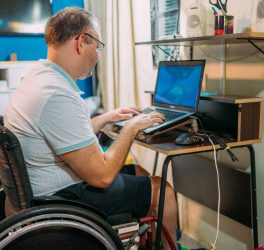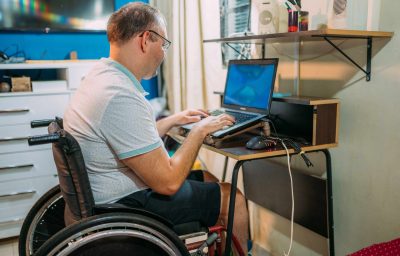
As the COVID-19 Recession deepens, nearly one million more people with disabilities are not working compared to March, according to today’s National Trends in Disability Employment, issued by Kessler Foundation and the University of New Hampshire’s Institute on Disability (UNH-IOD).
In the Bureau of Labor Statistics (BLS) Jobs Report released Friday, the number of working-age people with disabilities who were employed decreased by 950,000 between March and April (from 4,772,000 to 3,827,000), a 20 percent reduction. In comparison, the number of working-age people without disabilities who were employed decreased by 14 percent (from 140,135,000 to 120,804,000).
“The modest gains seen in the employment-to-population ratio for people with disabilities during January, February, and March have been lost due to the effects of COVID-19,” said John O’Neill, PhD, director of employment and disability research.
“Unlike the Great Recession and the Great Depression, many workers in the COVID Recession may be ‘on temporary layoff’ (aka furloughed) and may be recalled, rather than losing their jobs completely,” explained Andrew Houtenville, PhD, research director of the University of New Hampshire’s Institute on Disability.
The employment-to-population ratio for working-age people with disabilities decreased from 30.9 percent in April 2019 to 26.3 percent in April 2020 (down 14.9 percent or 4.6 percentage points). For working-age people without disabilities, the employment-to-population ratio also decreased from 74.3 percent in April 2019 to 63.2 percent in April 2020 (down 14.9 percent or 11.1 percentage points). The employment-to-population ratio, a key indicator, reflects the percentage of people who are working relative to the total population (the number of people working divided by the number of people in the total population multiplied by 100).
For working-age people without disabilities, the labor force participation rate decreased from 33.3 percent in April 2019 to 32.7 percent in April 2020 (down 1.8 percent or 0.6 percentage points). For working-age people without disabilities, the labor force participation rate also decreased from 76.8 percent in April 2019 to 73.6 percent in April 2020 (down 4.2 percent or 3.2 percentage points). The labor force participation rate is the percentage of the population that is working or actively looking for work.
In April 2020, among workers ages 16-64, the 3,827,000 workers with disabilities represented 3.1 percent of the total 124,631,000 workers in the U.S.
Finding a job and maintaining employment are challenges for everyone today, and people with disabilities who are striving to work face mounting challenges to reaching their goal of financial independence. Individuals with disabilities who are re-entering the community from jail or prison have even greater needs for comprehensive services and supports. The pandemic has promoted early release of inmates to reduce exposure in crowded facilities, increasing the need for vocational support for this population.








